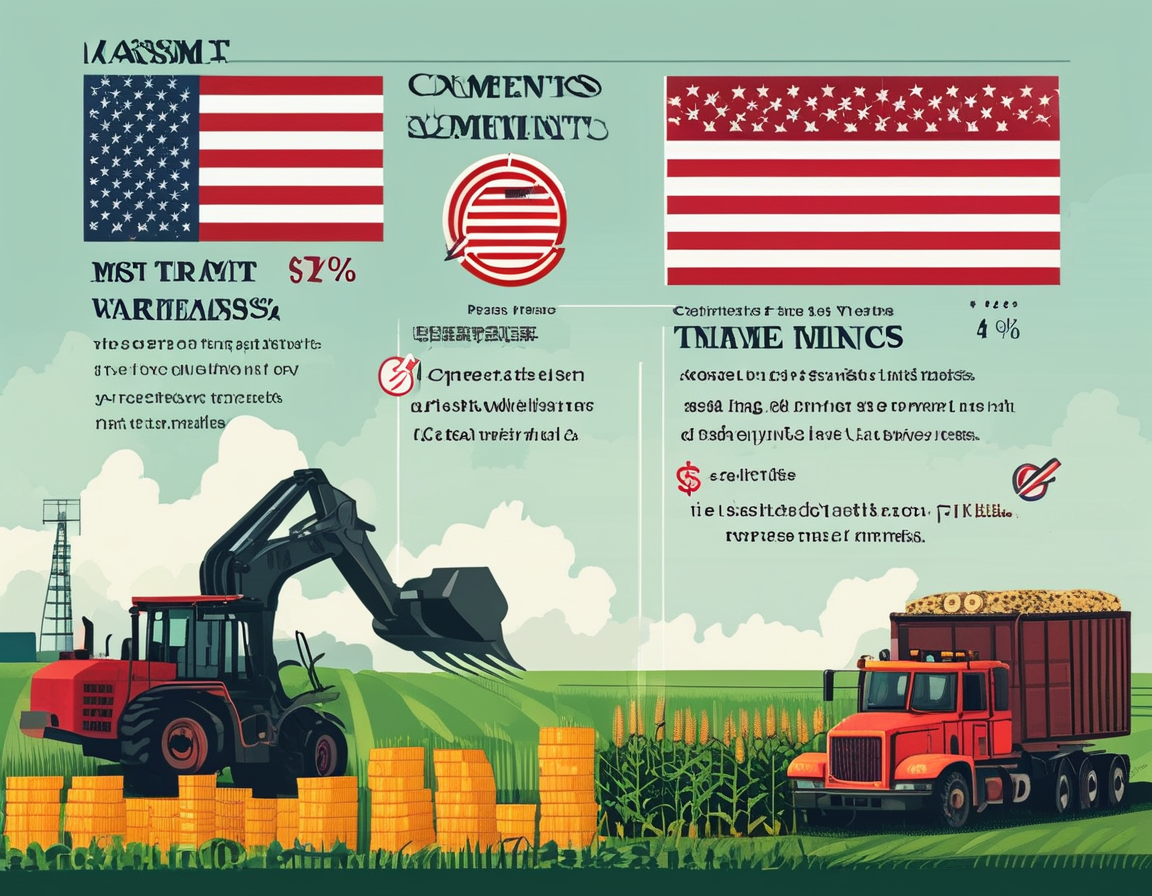
**Understanding the Impacts of the US-China Tariff War** The world is watching closely as the trade war between the US and China intensifies. It’s not just a battle of words. This conflict has real-world implications for countless businesses and individuals. How did we reach this point? The answer lies in the intricate web of global trade. As tariffs rise, the costs surge, and American companies feel the strain. But what does this mean for us as consumers? Could our everyday expenses skyrocket due to these international disputes? These are questions on everyone’s mind. When American companies were hit with a staggering 34% increase in tariffs on goods sent to China, the ramifications were immediate. For agricultural producers, this increase was a heavy blow. After already facing 10 to 15% tariffs due to previous policies, many found themselves pricing out of the Chinese market. It’s easy to imagine a farmer back home, watching his profits dwindle. Can we afford to lose our agricultural exports? Or will we see prices shoot up at our local grocery stores? The significance of this escalation cannot be overstated. **The Timing of China’s Response** The timing of China’s announcement is telling. Released late on a Friday, it felt almost designed to bury bad news. Why Friday? Perhaps it was a strategy to minimize domestic panic. Or maybe this was a clear signal of defiance from Beijing. It raises a question: does this move reflect a calculated strategy or a desperate response? In any case, the response underscores a reality we cannot ignore. The world’s two largest economies are in a standstill. Both sides refuse to budge. When President Xi announced these tariff responses, he wasn’t hiding from the media. Instead, he was out planting trees, symbolizing a calm resilience in the face of adversity. What message was he sending to the rest of the world? Was it one of strength or dismissiveness? This defiance is troubling. It suggests a potential lack of willingness to negotiate further. As trade routes shift, the implications could be substantial. **The Ripple Effects of Tariffs** How far-reaching are these tariff effects? Analysts warn of a looming crisis, especially since our world is interconnected. The components for many products arrive from different corners of the globe. When a single country falters, the ripple effects can turn disastrous. The anxiety isn’t unfounded. If US producers face barriers, costs might transfer directly to consumers. Imagine walking into a store to find your favorite products, only to discover they are now out of reach. **A Call for Solutions** Is there a path forward? One possibility could involve improved negotiations. Perhaps both nations can find common ground. Some even suggest looking elsewhere for trade partnerships. As China seeks to bolster its relations with nations less aligned with the US, what does that mean for American companies? If this shift occurs, the consequences could be severe. Consumers may feel the pinch, bearing the brunt of higher prices without understanding why. Ultimately, the outcome of this economic face-off isn’t predetermined. While the immediate future appears uncertain, protecting our interests and exploring viable solutions may be our best course of action. With potential price hikes and strained relationships, we must pay attention. This trade war could impact us all. What do we do if the economy shifts beneath our feet? Understanding the full landscape may provide insights worth considering.
Leave a Comment